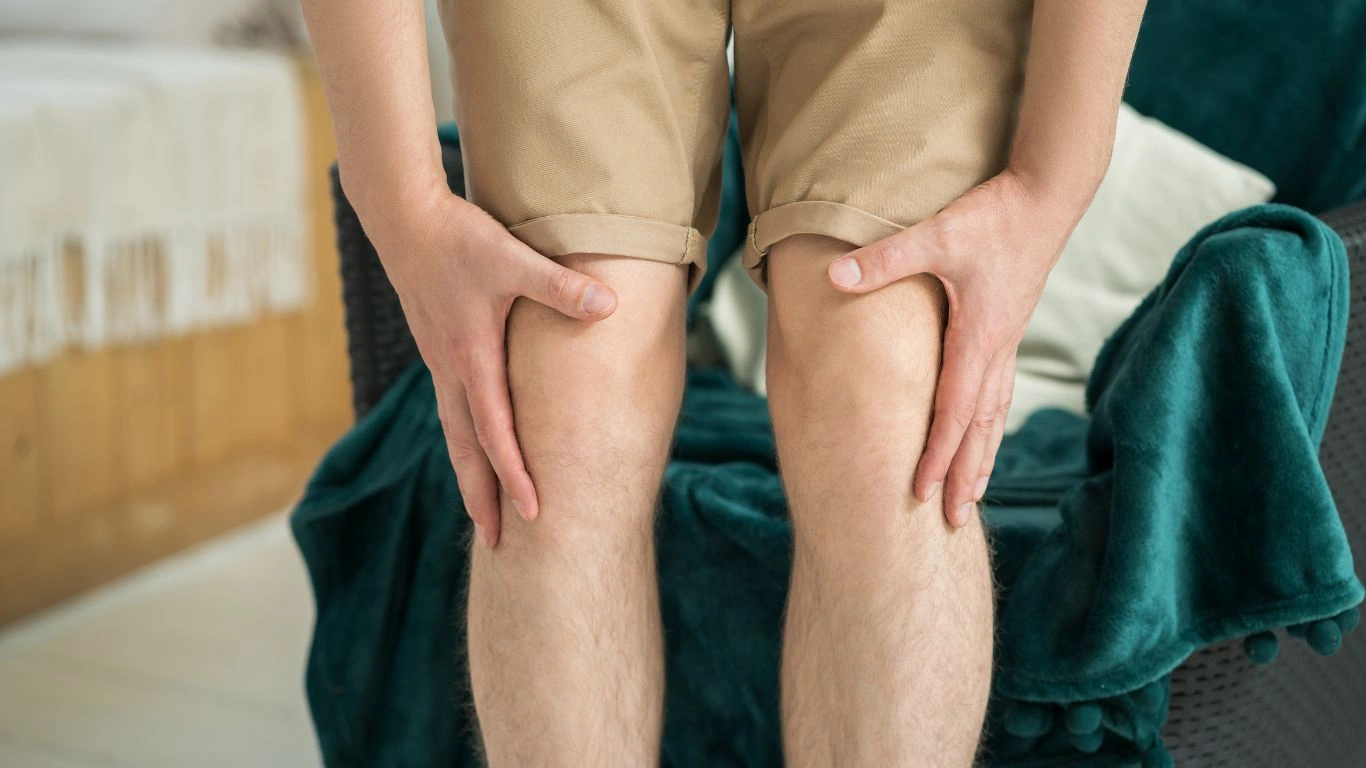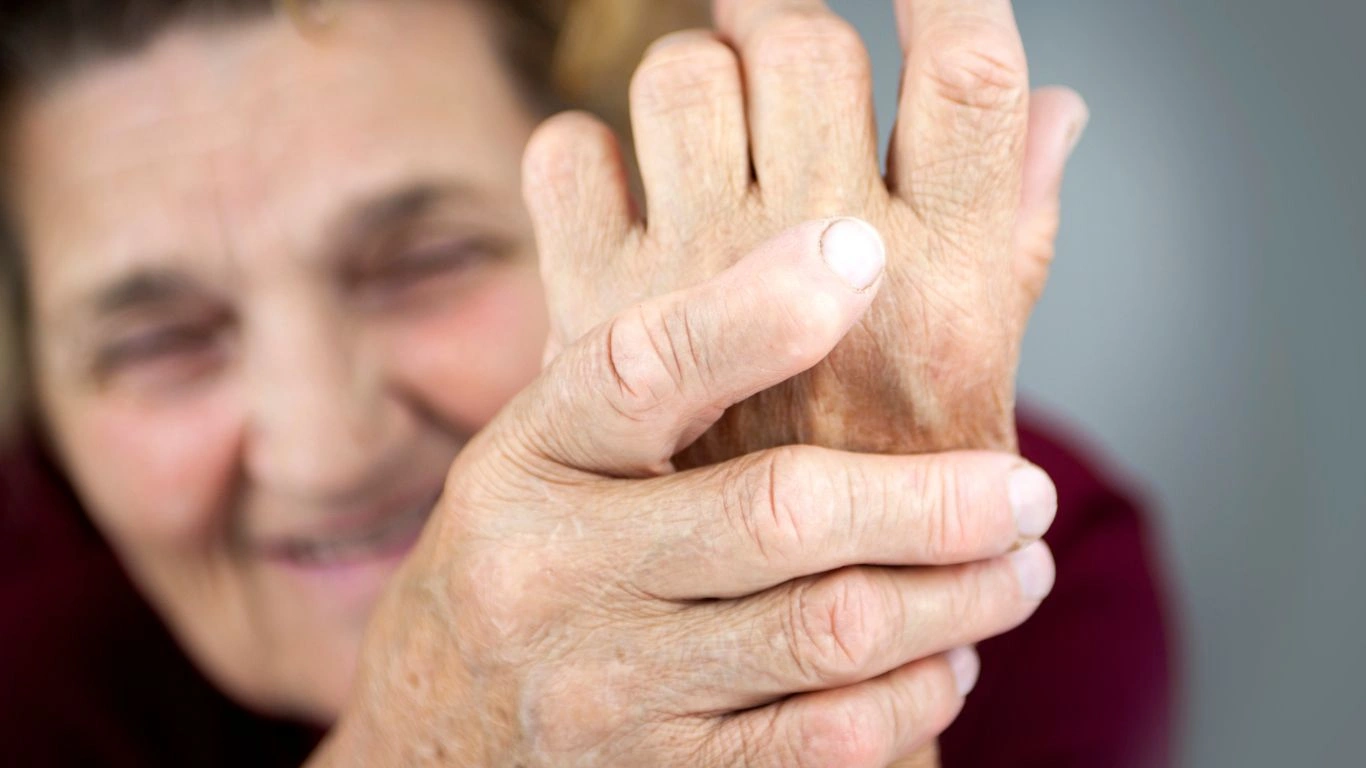Rheumatoid Arthritis Pain Relief: Best Strategies for Lasting Comfort
Living with rheumatoid arthritis (RA) can feel like an unpredictable rollercoaster—some days are manageable, while others make even the simplest tasks feel impossible. As someone who has spent years helping individuals navigate this condition, I understand how frustrating and exhausting it can be. But here’s the good news: effective pain management strategies exist, and they can truly transform your quality of life. Whether you’re newly diagnosed or have been battling RA for years, this guide will help you take control of your pain and regain a sense of normalcy.
Understanding Rheumatoid Arthritis and Its Impact on Daily Life

RA isn’t just about joint pain—it’s an autoimmune disease that can affect your entire body. Unlike osteoarthritis, which results from wear and tear, RA occurs when the immune system mistakenly attacks the joints, causing inflammation, stiffness, and damage over time. It’s like having an overprotective immune system that just won’t calm down.
From my experience working with RA patients, I’ve seen firsthand how it impacts daily life. Simple things like opening a jar, typing on a keyboard, or even getting out of bed in the morning can become daunting tasks. And let’s not even talk about the infamous morning stiffness—that feeling of being trapped in your own body until your joints decide to cooperate.
Common Symptoms Beyond Joint Pain
RA doesn’t just stop at joint discomfort. Many people experience a range of symptoms, including:
- Fatigue: That overwhelming, bone-deep exhaustion that no amount of sleep seems to fix.
- Swelling and Redness: Inflamed joints that feel warm to the touch.
- Limited Mobility: Stiffness that can last for hours, especially in the morning.
- Flares: Unpredictable episodes where symptoms suddenly worsen.
- Systemic Effects: RA can also affect the eyes, lungs, and even the heart.
Effective Pain Management Strategies for Rheumatoid Arthritis

One of the most common questions I get from my patients is: “How do I manage this pain without feeling like I’m constantly relying on medication?” While prescription drugs play a crucial role, there are plenty of complementary strategies that can help minimize discomfort and improve function.
1. Medication: Finding the Right Balance
RA treatment often includes a mix of medications, such as:
- NSAIDs: Over-the-counter options like ibuprofen can help reduce inflammation.
- DMARDs: Disease-modifying anti-rheumatic drugs slow down disease progression.
- Biologics: Targeted therapies that specifically address immune system dysfunction.
- Low-Dose Steroids: Sometimes used for short-term relief during flares.
However, I always emphasize that medication alone isn’t the answer—it’s just one piece of the puzzle.
2. Movement and Gentle Exercise
It sounds counterintuitive, but moving your joints can actually help reduce stiffness and pain. When my patients first hear this, they often look at me like I’m suggesting they run a marathon! But the key is finding low-impact exercises that work for you.
Some of the best options include:
- Swimming: The buoyancy of water takes pressure off joints while allowing for full-body movement.
- Yoga and Stretching: Improves flexibility and reduces stiffness.
- Strength Training: Helps support joints by strengthening the surrounding muscles.
- Walking: A simple, low-impact way to keep joints mobile.
One of my patients, Sarah, was convinced she couldn’t exercise due to pain. But after starting with five minutes of gentle stretching each morning, she noticed a dramatic difference in her mobility and pain levels. Small, consistent movements really do add up!
3. Heat and Cold Therapy
Using heat or cold can be a game-changer for RA pain. Here’s how to decide which one to use:
- Heat Therapy: Great for stiffness, especially in the morning. A heating pad or warm bath can work wonders.
- Cold Therapy: Best for reducing inflammation and numbing sharp pain. Ice packs can be especially helpful during flares.
From personal experience, I always recommend my patients keep both options on hand. Some days, heat feels like a lifesaver, while other days, only ice will do the trick.
Diet and Lifestyle Changes to Support Joint Health

It’s no secret that what you eat can influence inflammation levels in your body. Making a few key dietary changes can help reduce RA symptoms naturally.
1. Anti-Inflammatory Foods
A diet rich in anti-inflammatory foods can make a noticeable difference. Some top picks include:
- Fatty Fish: Salmon, sardines, and mackerel are loaded with omega-3s.
- Leafy Greens: Spinach, kale, and Swiss chard help combat inflammation.
- Turmeric: This spice contains curcumin, a natural anti-inflammatory compound.
- Berries: Packed with antioxidants that help fight inflammation.
On the flip side, I always advise avoiding processed foods, excessive sugar, and trans fats, as these can trigger inflammation.
2. Hydration and Joint Health
Believe it or not, staying properly hydrated can help keep your joints lubricated. I always remind my patients to drink plenty of water throughout the day—your joints will thank you for it!
Alternative Therapies for Rheumatoid Arthritis Pain Relief

While medications and lifestyle changes are essential, many people find additional relief through alternative therapies. I’ve had patients who were skeptical at first, only to be surprised at how much these methods helped reduce their pain and improve mobility.
1. Acupuncture: Ancient Wisdom Meets Modern Relief
I know what you’re thinking—“Needles? No thanks!” But hear me out. Acupuncture has been used for thousands of years to relieve pain, and many RA sufferers swear by it. This therapy works by stimulating specific points on the body, promoting circulation and reducing inflammation.
One of my patients, Tom, was struggling with persistent knee pain. He tried acupuncture as a last resort, and after a few sessions, he noticed a real difference. While it’s not a magic cure, it’s certainly worth considering.
2. Massage Therapy: A Soothing Way to Ease Stiffness
Regular gentle massage can help improve circulation, relax tight muscles, and reduce overall pain. However, not all massages are created equal. Deep tissue work can sometimes be too intense for RA, so I always recommend a therapist who specializes in arthritis-friendly techniques.
3. Mind-Body Techniques: The Power of Mental Wellness
RA isn’t just physically exhausting—it takes a mental toll too. Stress and anxiety can actually trigger flare-ups, so managing mental health is just as important as treating physical symptoms. Some powerful techniques include:
- Meditation: Helps calm the nervous system and reduce stress-related inflammation.
- Guided Imagery: A relaxation technique where you visualize pain leaving your body.
- Breathing Exercises: Simple breathing techniques can help during flare-ups.
I personally love guided meditation—it helps me stay grounded, and many of my patients find it useful for coping with pain.
Sleep and Its Role in Rheumatoid Arthritis Management

When you have RA, sleep quality can make or break your day. Unfortunately, chronic pain can make it harder to get a good night’s rest, creating a vicious cycle—pain leads to poor sleep, and poor sleep leads to more pain.
1. Creating a Joint-Friendly Sleep Environment
Here’s what I recommend to my patients who struggle with sleep:
- Invest in a Supportive Mattress: A medium-firm mattress can help reduce joint pressure.
- Use Pillows Strategically: A pillow between your knees can help align your spine and reduce discomfort.
- Keep Your Bedroom Cool and Dark: A comfortable environment promotes better sleep quality.
2. Nighttime Routines to Reduce Pain
Small bedtime habits can make a huge difference. Try:
- Taking a Warm Bath: Helps relax stiff joints before bed.
- Gentle Stretching: Loosens up tight muscles and improves circulation.
- Avoiding Stimulants: Caffeine and screen time can interfere with deep sleep.
One of my clients, Maria, struggled with sleeping through the night due to RA pain. Once she started using a heating pad before bed and doing gentle stretches, she finally started waking up feeling more refreshed.
Staying Positive and Managing Flare-Ups
Let’s be real—there will be tough days. Flare-ups can strike without warning, leaving you frustrated and exhausted. The key is to have a flare-up plan in place so you’re not caught off guard.
1. Recognizing Triggers
Tracking symptoms in a pain journal can help you identify what worsens your RA. Common triggers include:
- Weather Changes: Many people feel worse when it’s cold or rainy.
- Stress: Emotional stress can lead to increased inflammation.
- Overexertion: Pushing too hard on good days can lead to bad days.
2. Giving Yourself Grace
It’s okay to rest when you need to. I always remind my patients that listening to your body isn’t giving up—it’s smart management. If today is a bad day, there’s always tomorrow to try again.
Case Studies & Real-Life Examples

Over the years, I’ve worked with many individuals battling rheumatoid arthritis, each with their own unique challenges and victories. Hearing their stories is a powerful reminder that managing RA is possible with the right strategies.
1. Sarah: The Power of Movement
Sarah, a 42-year-old teacher, struggled with morning stiffness that made getting ready for work a daily battle. She was hesitant about exercise but started incorporating gentle yoga and stretching before bed. Within a few weeks, she noticed her stiffness improved dramatically, and she felt more in control of her symptoms.
2. Mark: Finding the Right Medication Balance
Mark, a 55-year-old retired firefighter, tried multiple medications before finding a combination that worked. He now takes a biologic alongside an anti-inflammatory diet and reports fewer flare-ups. His biggest lesson? Patience. It took some trial and error, but he finally found a regimen that helped him regain his active lifestyle.
3. Lisa: Prioritizing Mental Health
Lisa, a 38-year-old mom of three, noticed stress was a major RA trigger. After incorporating guided meditation, journaling, and prioritizing self-care, she saw a noticeable drop in flare-ups. Her story highlights how managing stress can be just as important as managing physical symptoms.
Key Takeaways: What You Need to Remember
If you take anything away from this guide, let it be these key points:
- RA is more than joint pain: It’s an autoimmune disease that requires a whole-body approach.
- Movement is medicine: Gentle exercise can help reduce stiffness and improve mobility.
- Diet matters: Anti-inflammatory foods can help reduce symptoms.
- Alternative therapies can help: Acupuncture, massage, and meditation are great additions to traditional treatment.
- Listen to your body: Rest when needed and track your triggers to better manage flare-ups.
FAQs
1. Can RA be cured?
Unfortunately, there’s no cure for rheumatoid arthritis, but with the right treatment plan, many people live full and active lives.
2. What’s the best diet for RA?
A diet rich in omega-3 fatty acids, leafy greens, turmeric, and berries can help reduce inflammation. Avoid processed foods, excessive sugar, and trans fats.
3. How do I manage RA fatigue?
Fatigue can be tough, but pacing yourself, staying hydrated, and getting quality sleep can make a big difference.
4. Are there natural remedies for RA?
Yes! Heat and cold therapy, meditation, acupuncture, and supplements like fish oil can provide relief. However, always consult a doctor before trying new treatments.
Bonus: Additional Resources & DIY Tips
Looking for more ways to manage RA naturally? Here are some additional resources:
- RA-Friendly Recipes: Check out Arthritis.org for meal ideas that fight inflammation.
- Exercise Guides: The Rheumatoid Arthritis Support Network has great workout suggestions.
- Mindfulness Apps: Apps like Calm and Headspace offer guided meditations tailored for chronic pain.
Appendix: References, Disclaimer, and Call to Action
| Resource | Link |
|---|---|
| Arthritis Foundation | arthritis.org |
| Mayo Clinic RA Overview | mayoclinic.org |
| RA Diet and Nutrition | healthline.com |
Disclaimer: This article is for informational purposes only and is not a substitute for medical advice. Always consult a healthcare professional for personalized recommendations.
If you found this guide helpful, share it with others who may be struggling with RA! Also, drop a comment below—what has helped you manage your symptoms?

Tarra Nugroho is a dedicated Nurse Practitioner with a strong foundation in family and preventive care. She brings both compassion and clinical expertise to her practice, focusing on patient-centered care and health education. As a contributor to Healthusias.com, Tarra translates medical knowledge into clear, empowering articles on topics like women’s health, chronic disease management, and lifestyle medicine. Her mission is simple: help people feel seen, heard, and informed—both in the clinic and through the content she creates. When she’s not caring for patients, Tarra enjoys weekend hikes, plant-based cooking, and curling up with a good health podcast.






